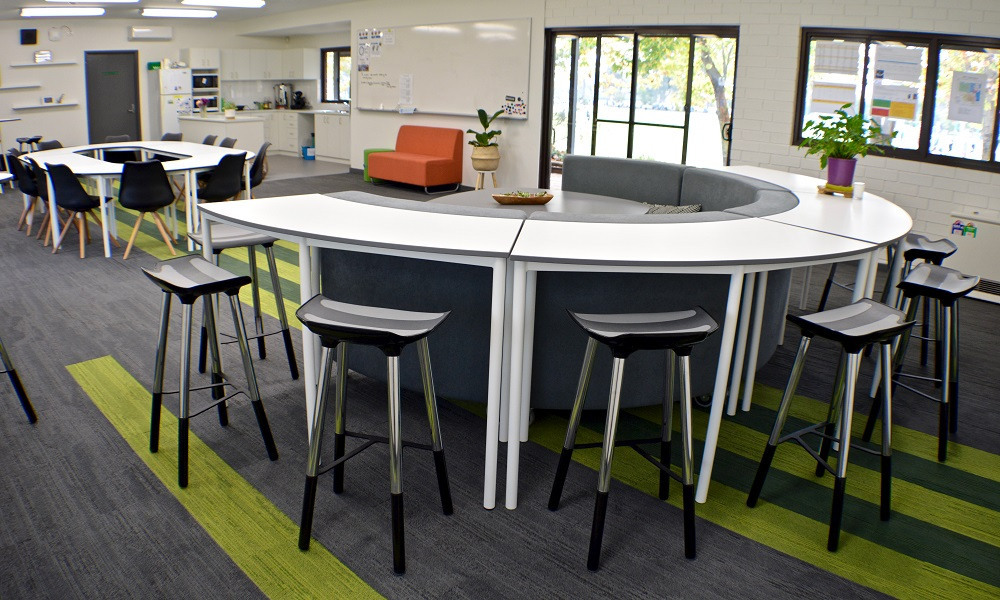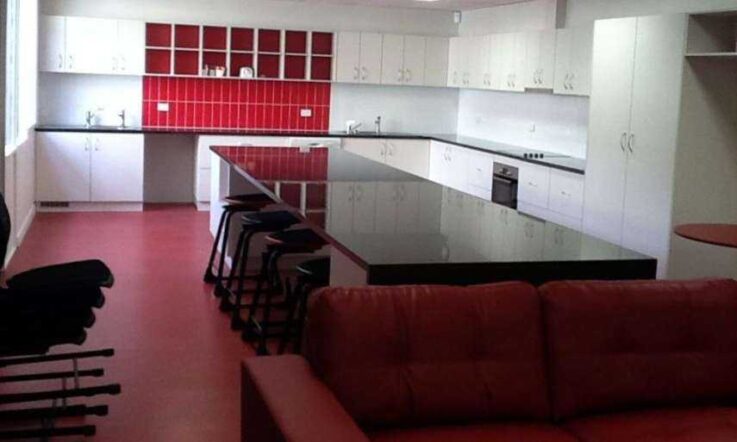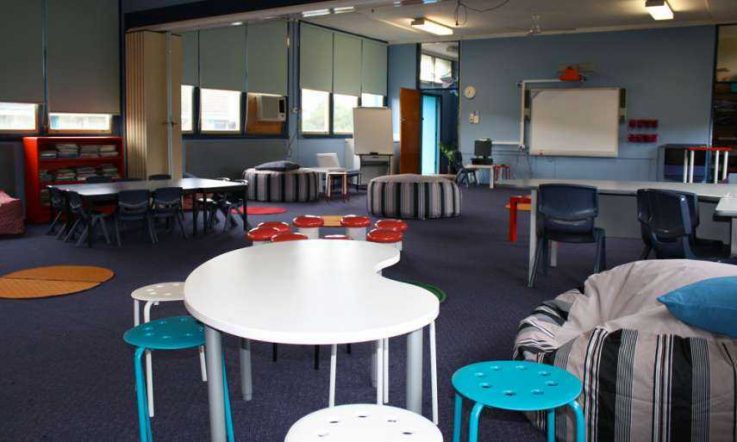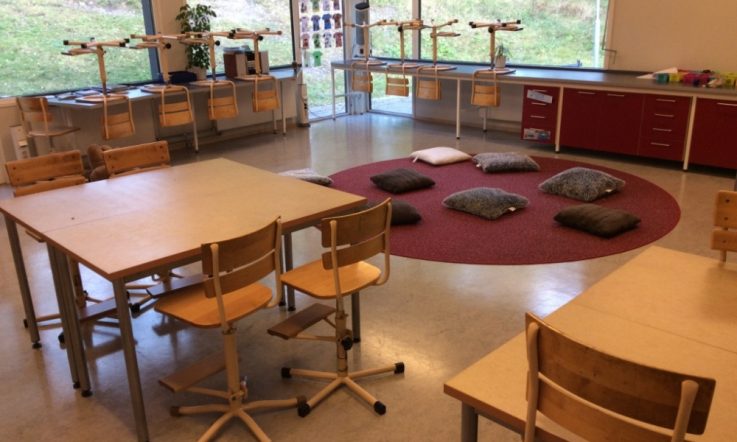A school staffroom is the place in which educators spend the majority of their non-teaching school time. In today's article, a West Australian principal shares why he believes a staffroom is important for improving staff wellbeing, and building a sense of community and connectedness.
On any given day, the school staffroom at Vasse Primary School is filled to capacity with teachers, school leaders and support staff.
For the first day of the 2017 school year, the 75 staff members at the West Australian school were welcomed into an upgraded staffroom space. The facility, which had not been updated since the 1980s, now included high tables, a mobile kitchen bench and a collaborative seating space in the middle of the room.
‘We wanted our teachers to not only engage in their rooms, but also have those learning environments in our staffroom,' Principal Sinan Kerimofski says.
‘Obviously the colours lend itself to the nice feel and soft tones. We've also done some nice decorating and made it a homely feel, we have some prints on the wall and some nice shelving ...'
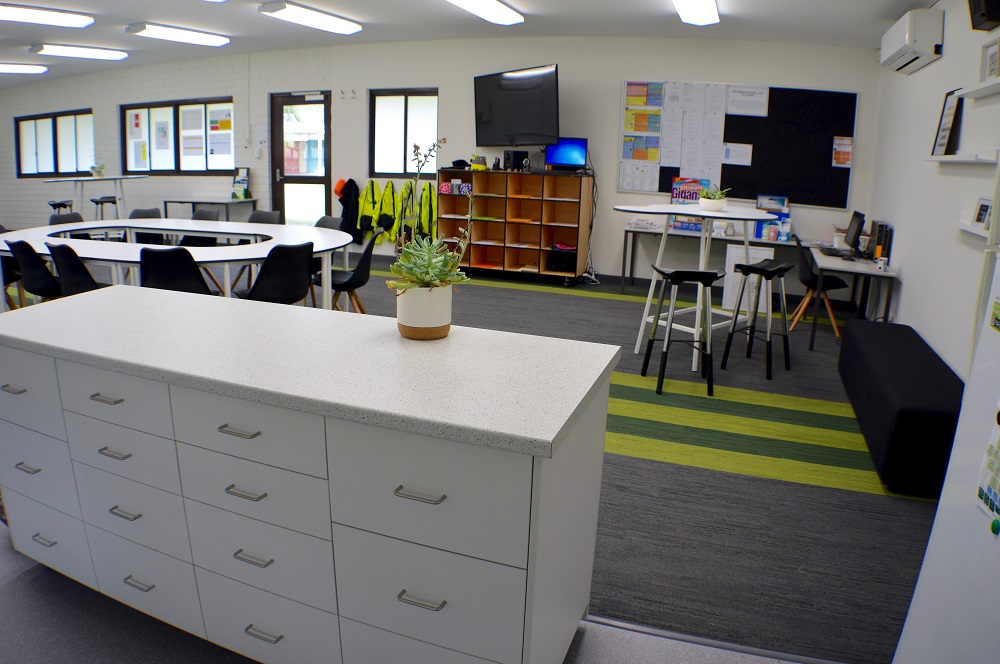
It's important to Kerimofski that the space demonstrates to staff that they are valued in the school community.
‘If you're a staff member and you walk into an environment where you feel valued and you feel that someone has taken time to create a space that you are going to relax in or enjoy, you will get a feeling of self-worth and also worth for the organisation,' he says. ‘We just really wanted an environment where people felt special, people felt they wanted to be at, and [one that lends] itself to good conversation and healthy conversations.'
According to research from New Zealand and Australian academics, published in the Asia-Pacific Journal of Teacher Education, a staffroom not only functions as a physical space, but also a social, cultural and emotional space for its occupants (Hunter, Rossi, Tinning, Flanagan & Macdonald, 2011).
‘The staffroom, the school-based spatial arrangement in which teachers work and/or meet, is an important site for influencing curriculum and resource decisions, a site for the constitution of professional subjectivities of the pre-service and experienced teacher,' the paper reads.
The researchers note the staffroom is not only a social space for educators, but it is also a potential location for professional learning communities or teacher inductions. ‘[It] represents a place where there is potential to learn certain things that are not likely learned in the classroom or the playground, places where students are present.'
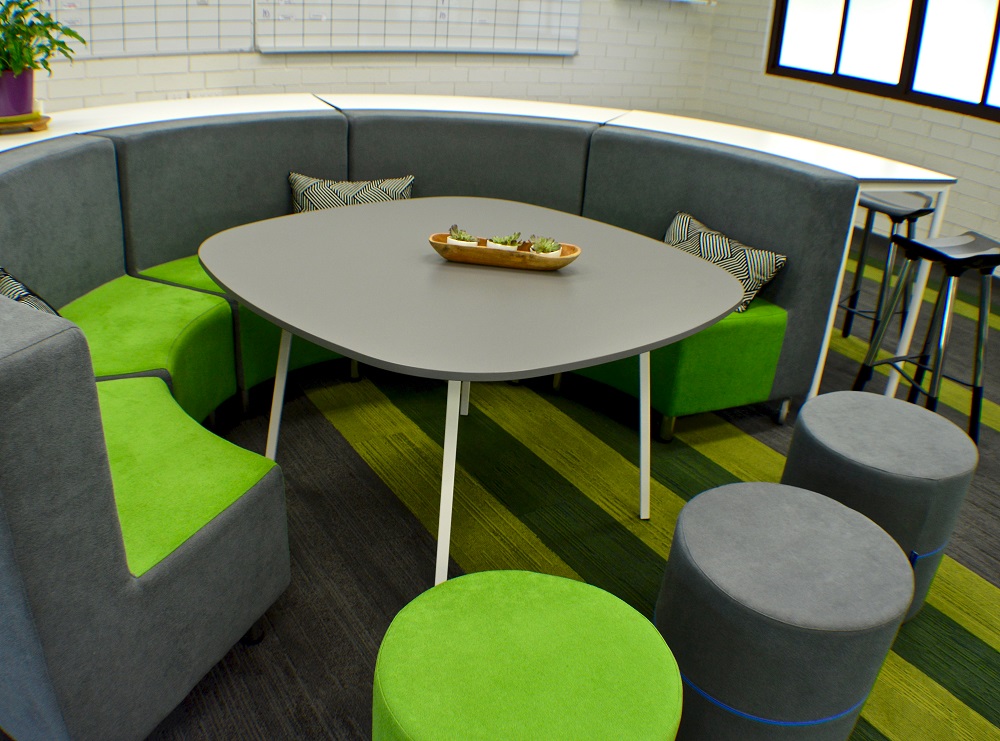
At Vasse Primary School, 240 kilometres southwest of Perth, the focus is on three main pillars – people, places and pedagogy. The upgraded staffroom furniture is now on par with the facilities in each of the school's classrooms. The staffroom upgrade was only one part of a $100 000 admin upgrade at the school. The renovations included walls being knocked out and a new kitchen. The school worked with furniture design company NorvaNivel and also bought some items from Woods Furniture. The overall design mimics a campfire, where staff are encouraged to sit in circles and speak to one another.
‘You can't avoid talking to somebody with the way it's been structured. So I really want that sense of connectedness and community built around how the staffroom looks and feels,' Kerimofski shares. ‘It makes you feel okay and it allows people to open up and talk about different things by having that structure.'
He adds it's incredibly important that the leadership team and administrators are present in the staffroom and available to staff when required. ‘We must go into the staffroom and engage in conversations and it comes back to that “people” that we talked about initially – people, places, pedagogy.
‘Relationships, to me, is the number one factor in a school functioning really well. That's why we invested the finances into having a nice staffroom, because I want people to feel that they are valued …'
I think staffrooms are the most under rated resources for staff health & well being. Building a sense of community and connectedness. pic.twitter.com/2B7A5sMP6n
— Sinan (@skerimofski) July 11, 2017
The walls of a typical school staffroom could have notices, information or advertising plastered over them, but Kerimofski says that is something he's really tried to keep to a minimum. ‘We try to focus mainly on our positives on the walls so we don't want it smattered with what's coming up here or there or anything like that, or promotional material. We don't really want that to happen, so we just keep it for some functional, operational type stuff.'
Instead, he prefers to highlight student work or otherwise keep the walls very clean.
‘We really try to minimise the departmental type paperwork and have more of a space where teachers can come and relax and just switch off for five minutes and enjoy the conversation with each other.'
Thursday mornings are an important time in the Vasse Primary School staffroom, as it's when the weekly staff morning tea takes place. And it's not only school staff who take part – community health nurses, staff from the dental van, psychologists and occupational therapists have all been known to come to the staffroom for this weekly ritual.
According to Kerimofski, the efforts made to improve the space have had the desired effect on staff. ‘We're very fortunate and very grateful that we've been given the opportunity to drive [this change] and it's been very successful and I'm really excited about it.'
References:
Hunter, L., Rossi, T., Tinning, R., Flanagan, E., & Macdonald, D. (2011). Professional learning places and spaces: the staffroom as a site of beginning teacher induction and transition. Asia-Pacific Journal of Teacher Education, 39(1), 33-46
As a school leader, how do you build a sense of connectedness and community in your school staffroom? What impact does this have on staff wellbeing and morale?
The furniture at Vasse Primary School has been arranged to mimic a campfire, in an effort to encourage staff collaboration and sharing. Consider your own staffroom: does the physical environment encourage teamwork or the building of relationships?
